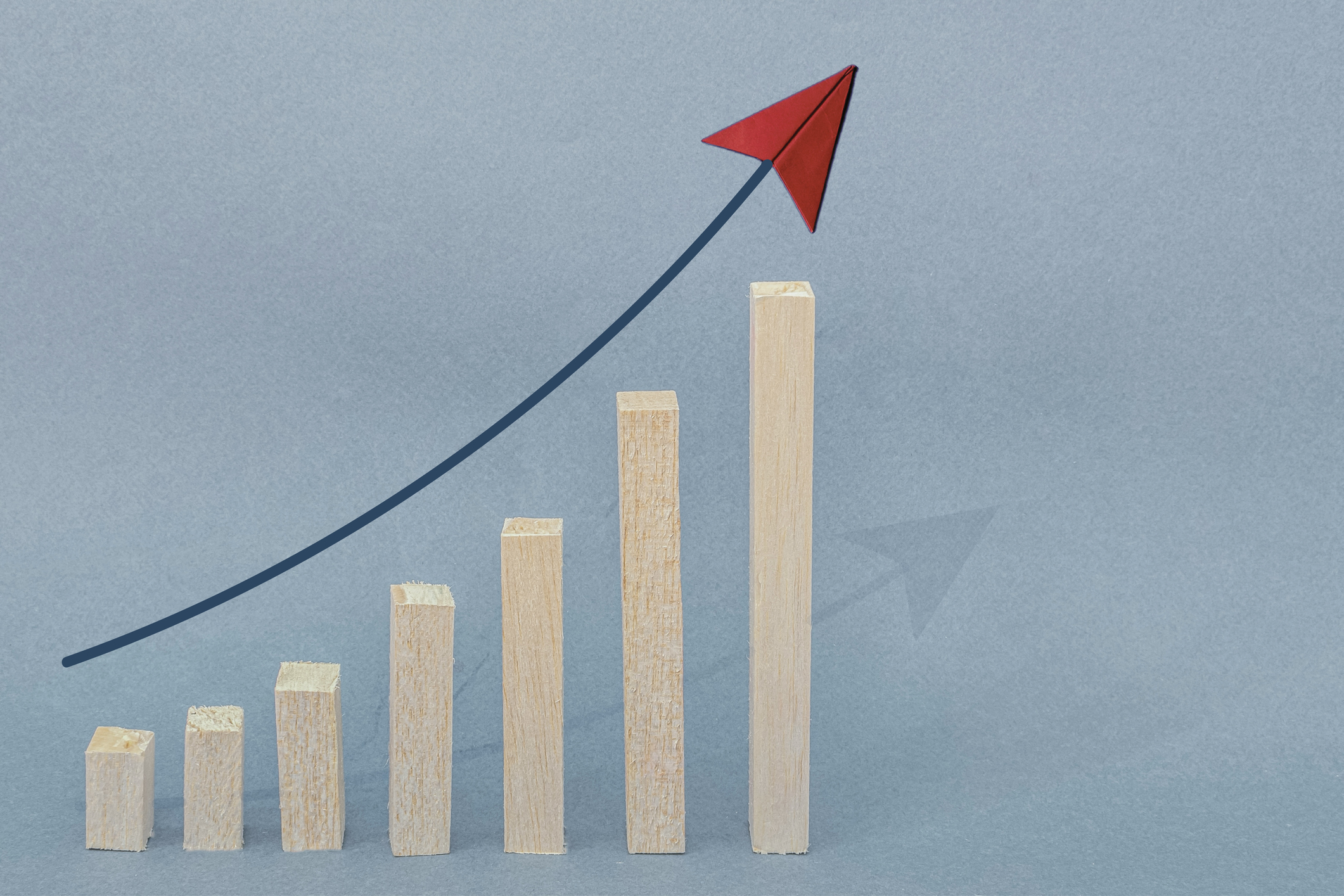Types of Bond Fund Yields and What They Mean
What’s a 30-day SEC yield? A trailing 12-month yield? A yield to maturity? We explain what each measure says about an income fund.


Now that bonds offer decent yields, investors have been barreling into fixed-income mutual and exchange-traded funds. Taxable bond funds and ETFs pulled in net inflows (the sum of money deposited minus money that’s withdrawn) of $143 billion over the first three months of 2024, a near-record.
But the array of bond fund yields can be confusing for investors trying to add a fund to their portfolio. In late March, for instance, the Schwab 1-5 Year Corporate Bond ETF (symbol SCHJ) boasted a 30-day SEC yield of 5.11%, a trailing 12- month or distribution yield of 3.16%, and a 5.28% yield to maturity. “If you look at all three, they can help create an overall picture of a bond fund,” says D.J. Tierney, a senior investment portfolio strategist at Charles Schwab Asset Management.
Note that a bond fund’s yield is just one piece of the puzzle when you’re considering an investment in the fund. Investors should also understand the fund’s investment objective, fees and expenses, overall credit quality, potential risk of default on debt, and sensitivity to interest rates.
From just $107.88 $24.99 for Kiplinger Personal Finance
Be a smarter, better informed investor.

Sign up for Kiplinger’s Free Newsletters
Profit and prosper with the best of expert advice on investing, taxes, retirement, personal finance and more - straight to your e-mail.
Profit and prosper with the best of expert advice - straight to your e-mail.
And be careful about confusing yield with income, says Tierney. Income is the coupon rate a bond pays — it’s the annual interest paid on a bond, and it is generally fixed throughout a bond’s life span. A bond’s yield, on the other hand, can be an indicator of the return an investor may receive each year over the life of a bond held to maturity, relative to the price of the bond. (Bond prices and yields move in opposite directions.)
For example, a five-year Treasury note that matures in January 2029 pays a coupon rate of 1.75%. That’s the income, expressed as a percentage of the face value of the bond, you can expect to receive per year. But in late April, the bond yielded 4.74%, reflecting the expected return on your investment over the life of the bond, says Tierney, including interest payments and principal you may expect to receive when it matures, relative to the market price of the bond.
That said, investors should think of a fund’s yield as “a starting point” when it comes to forecasting a total return, says Warren Pierson, co-chief investment officer of Baird Funds. It’s no guarantee. “A lot can go wrong before a yield turns into total return,” says Pierson. Use this guide to help you demystify bond yields and choose the right fund for your needs.
30-day SEC yield
The Securities and Exchange Commission created the standardized calculation for the SEC yield, sometimes called the 30-day yield or current yield, to allow investors to compare one bond fund to another. Some even refer to it as the standardized yield.
“If you’re comparing two different funds, this is the yield to look at first,” says Pierson (and it’s the yield cited most often in Kiplinger). Be wary if one fund sports a yield that’s measurably higher than that of a similar fund. “Rest assured there’s some additional risk,” he says. “You might not be able to determine what the risk is, but it’s there.”
The calculation shows investors what they would earn, after expenses, over a 12-month period if the fund continued earning the same yield for the rest of the year. It annualizes the income distributed over the past 30 days and divides it by the fund’s net asset value at the end of the 30-day period. All SEC yields are net of expenses. A subsidized 30-day yield reflects fee waivers and/or expense reimbursements during the period; an unsubsidized figure does not adjust for waivers or reimbursements. (Some funds don’t have waivers. In those cases, unsubsidized and subsidized 30-day yields will be the same.)
But there are caveats. The SEC yield is backward-looking — by 30 days, to be exact. What’s more, fund companies are not even required to disclose yield, but when they do, they must use the SEC-yield calculation. As a result, some bond funds disclose their 30-day yields only quarterly or monthly; others update them daily. It pays to be mindful of the “as of” date when you compare the SEC yields of funds.
Trailing 12-month yield (TTM yield)

Also called the distribution yield, a trailing 12-month yield is the ratio of the sum of all fund distributions over the past 12 months to the fund’s net asset value at the end of the period.
The one-year look-back makes the distribution yield even more backward-looking than the 30-day SEC yield. As a result, during periods of dramatic interest rate shifts, the trailing 12-month yield can be misleading, says Tierney. “The first question investors should ask is, are we in a stable rate environment, or is it changing?”
Moreover, the actual distribution-yield calculation is not standardized and thus may vary depending on the fund issuer.
Yield to maturity (YTM)
The yield to maturity of a single bond is the overall annual interest rate you will earn if you buy the IOU and hold it to maturity.
But bond funds hold dozens if not hundreds or thousands of bonds, all with different maturity dates. So it’s not a calculation that all fund firms provide. Vanguard does, however. In late April, Vanguard Short-Term Investment-Grade had a yield to maturity of 5.4%. And Charles Schwab Asset Management (not to be confused with the online broker) provides it for its mutual funds and ETFs.
Fidelity and Pimco, on the other hand, do not. Instead, you might see an “average maturity” or “effective maturity” for the fund, listed in years. That’s the average length of time until securities held by a fund reach maturity and are repaid.
That stat might reveal more about interest rate sensitivity than it does about the fund’s yield, however. The longer a fund’s average maturity, the more the fund’s share price will move up or down in response to changes in interest rates.
Yield to worst (YTW)
Some bonds, such as municipal, mortgage and certain corporate bonds, are callable, meaning they can be “called in” and paid off early by the issuer before their maturity date. “You might have a bond with 10 years to maturity, but it’s callable in five years,” says Duane McAllister, senior portfolio manager at Baird Funds.
Calling in a bond early can be a good tactical move for issuers; it cleans up a firm’s balance sheet, for starters. A yield to worst, then, is the lowest yield an investor can expect on a callable bond — call it a worst-case-scenario yield.
Unfortunately, not all bond fund websites cite a yield to worst. But some do, including Baird. In late April, for instance, the Baird Aggregate Bond fund sported a portfolio average yield to worst of 5.08%. Says Baird’s McAllister, “That’s the worst- case scenario, but sometimes it works out to be better than that.”
Note: This item first appeared in Kiplinger Personal Finance Magazine, a monthly, trustworthy source of advice and guidance. Subscribe to help you make more money and keep more of the money you make here.
Related Content
Profit and prosper with the best of Kiplinger's advice on investing, taxes, retirement, personal finance and much more. Delivered daily. Enter your email in the box and click Sign Me Up.

Nellie joined Kiplinger in August 2011 after a seven-year stint in Hong Kong. There, she worked for the Wall Street Journal Asia, where as lifestyle editor, she launched and edited Scene Asia, an online guide to food, wine, entertainment and the arts in Asia. Prior to that, she was an editor at Weekend Journal, the Friday lifestyle section of the Wall Street Journal Asia. Kiplinger isn't Nellie's first foray into personal finance: She has also worked at SmartMoney (rising from fact-checker to senior writer), and she was a senior editor at Money.
-
 IRS Updates Capital Gains Tax Thresholds for 2026: Here’s What’s New
IRS Updates Capital Gains Tax Thresholds for 2026: Here’s What’s NewCapital Gains The IRS has increased the capital gains tax income thresholds for 2026. You'll need this information to help minimize your tax burden.
-
 Are You Outsourcing Taxes? Here’s the Age ‘Most Americans’ Hire a Tax Professional
Are You Outsourcing Taxes? Here’s the Age ‘Most Americans’ Hire a Tax ProfessionalTax Tips Taxpayers may outsource their financial stress by a specific age. Find out when you should hire a tax preparer.
-
 Your Estate Plan Isn't 'Done' Until You've Completed These Five Steps, From an Estate Planning Attorney
Your Estate Plan Isn't 'Done' Until You've Completed These Five Steps, From an Estate Planning AttorneyCongratulations on getting your estate plan in order. Now, you need to communicate the relevant details to ensure your plan is effectively carried out.
-
 A Nightmare for Parents: How to Navigate the Legal Boundaries of Tenant Rights During a Family Crisis
A Nightmare for Parents: How to Navigate the Legal Boundaries of Tenant Rights During a Family CrisisThis family's story illustrates how important it is to get help sooner rather than later and highlights the complexities of tenant rights and legal protections.
-
 Amazon Surge Sends S&P 500, Nasdaq Higher to Start November: Stock Market Today
Amazon Surge Sends S&P 500, Nasdaq Higher to Start November: Stock Market TodayAmazon inked a $38 billion cloud deal with OpenAI, which sent the stock to the top of the Dow Jones on Monday.
-
 If You'd Put $1,000 Into Home Depot Stock 20 Years Ago, Here's What You'd Have Today
If You'd Put $1,000 Into Home Depot Stock 20 Years Ago, Here's What You'd Have TodayHome Depot stock has been a buy-and-hold banger for truly long-term investors.
-
 Eight Steps to Help Get You Through the Open Enrollment Jungle at Work
Eight Steps to Help Get You Through the Open Enrollment Jungle at WorkWondering how to survive open enrollment this year? Arm yourself with these tools to cut through the process and get the best workplace benefits for you.
-
 Seven Moves for High-Net-Worth People to Make Before End of 2025, From a Financial Planner
Seven Moves for High-Net-Worth People to Make Before End of 2025, From a Financial PlannerIt's time to focus on how they can potentially reduce their taxes, align their finances with family goals and build their financial confidence for the new year.
-
 I'm a Financial Planner: These Are the Seven Tiers of Retirement Well-Being
I'm a Financial Planner: These Are the Seven Tiers of Retirement Well-BeingLet's apply Maslow's hierarchy of needs to financial planning to create a guide for ranking financial priorities.
-
 Why More Americans Are Redefining Retirement, Just Like I Did
Why More Americans Are Redefining Retirement, Just Like I DidRetirement readiness requires more than just money. You have a lot of decisions to make about what kind of life you want to live and how to make it happen.